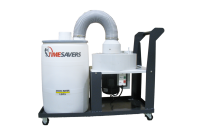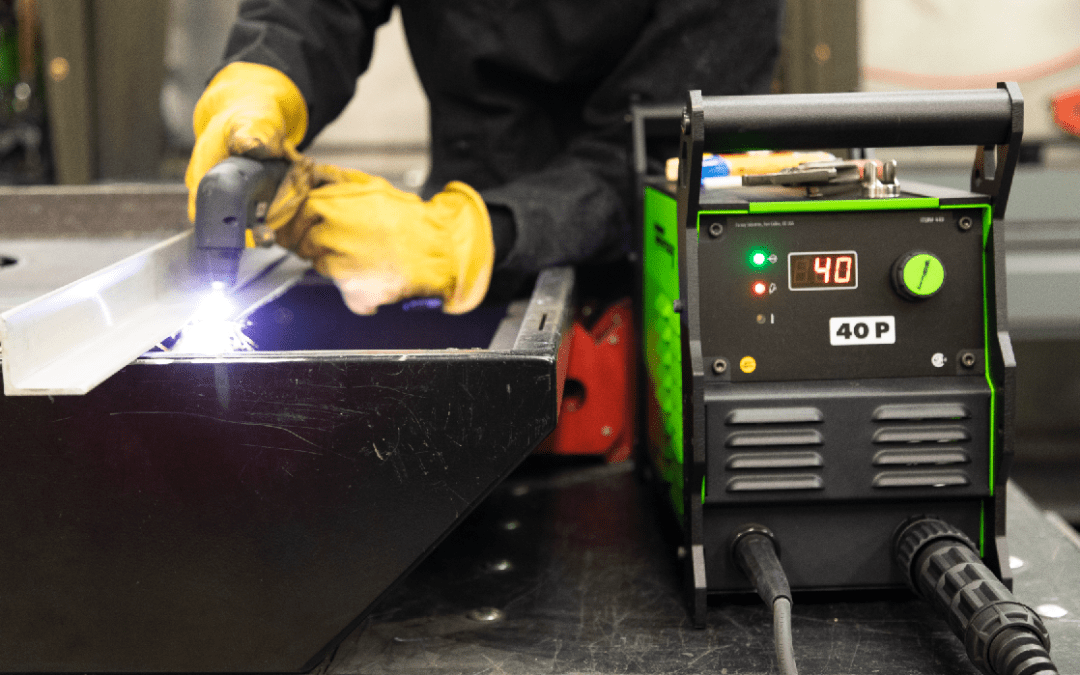FREE DELIVERY FOR WELDING*
* On Business Days - Purchases $100 or More
2.5% OFF By paying with Check, Wire or ACH
Online and Call-Ahead Orders
* Minimal Purchase Price $100
Types of Dust and Fumes in a production facility

Although it is essential for proper manufacturing, dust collection is usually overlooked as a priority. The importance of proper air filtration and waste handling can make the difference between a cleaned workspace and a hazardous one. Especially in a world where disease monitoring has become a part of workplace safety, proper ventilation and material handling is important for production to continue.
With that being said, there are many different types of ventilation systems for manufacturing, but in this article, we will define and explore 3 – wood dust collection, metal dust collection, and welding fume extraction.
Using a Dust Collector
In a production facility, processing raw materials can release hazardous particles that affect worker safety, health and even equipment lifespan. Dust collection machines typically work by blowing air into a collection container where particles of material are filtered out and stored there. Assuming there is a constant manufacturing process going on that picks up dust in the facility, the result is usually a filled tank of sawdust, metal dust or fine particulate of the material you may be handling.
Some factors manufacturers need to consider when buying dust collection machines are the following:
- Power of suction: Suction power is measured in CFM, which is Cubic Feet per Minute. Better the CFM, the more dust will be collected. Pretty simple. Most small shops need about 1000 CFM of airflow to have good fine dust collection and only need about 350 CFM for good chip collection.
- Single or double phases: Single phase dust collectors are cheaper but less effective. Double phase dust collectors separate the particles from larger chips of material in a separate chamber so it won’t clog filters and keep suction at its peak performance.
- Filter size: The size of the filter can determine how effective the machine will be. A filter that can filter 2.5 microns is considered standard, but dust collection filtration systems can get to as low as 0.3 microns, which will ensure high quality cleaning.
Depending on the activity involved, dust collectors can attach directly to the machines they filter, or they can sit next to (above in a fume extraction arm, below in a downdraft table) the area where dust is being produced.
For Wood:
Wood particles are easier to work with than metal dust, mainly due to the fact that wood is lighter and isn’t toxic or as combustible as metal when airborne. Wood dust collectors typically are cheaper than metal, but requirements for wood largely depend on the process you are looking to do with wood. Most commonly used are "cyclone" dust collectors, which swirl the dust in the collection chamber to separate it from the air, and remove any larger dust particles at first. To reference what tool you are working with, here are the CFM’s and duct sizes (diameter of the opening used to draft the air) necessary:
|
Tool |
CFM Req'd |
Duct Size |
||||
|
Table Saw up to 16" |
Bottom: 450-500 |
Bottom: 6" |
||||
| Jointer: |
|
6" |
||||
|
Planer |
800 |
6" |
||||
|
Radial arm saw up to 20" |
350-400 |
6" |
||||
|
Miter saws and similar |
350-400 |
6" |
||||
|
Shaper or router table |
350-400 |
6" |
||||
|
Band saw |
Under table: 350-400 |
6" x 4" x 4" |
||||
|
Disc sander up to 12" |
350-400 |
6" |
||||
|
Belt sander up to 6" |
Head end: 450-400 |
6" |
Taken from http://www.cleanshopair.com/SystemSize.html
Here is a list of some brands of wood dust collectors:
Metal dust collectors:
Metal dust collecting is a little more complicated than wood. On the one hand, many dust collectors work with both wood and metal. However, some types of metal dust such as aluminum dust can become combustible, meaning it can explode easily if a spark is ignited near the dust.
How do dry dust collectors work for metal?
This is similar, if not the same from wood dust collecting. As said before, many of the machines that do wood dust collection can also do metal dust collection. However, if workplace safety is a priority while working with metal, then a general recommendation would be to go for wet dust collection.
How do wet dust collectors work?
Wet Dust Collectors use a water-like solution to get particulates to stick together and collect them without running the hazardous risk of explosion. Wet dust collection typically uses a chamber of water that mixes with air that gets sucked into the machine, which will allow for the particles to stick together and sink to the bottom.
Brands of Metal Dust Collectors:
Fume extraction for welding:
By design, laser cutters create fumes and micro-particles from the material they are cutting or engraving. In welding too, soldering fumes are also released into the air. These fumes, however, are not vapor, but instead real particles suspended in air. As result, these fumes can be very harmful to both the health of manufacturing workers and the equipment they use. To solve this issue, fume extraction pulls fumes and dust via a negative draft and filters the particulate-filled air in a separate chamber.
Fume Arms vs. downdraft tables:
When welding, fumes come from the area of the weld directly, and can affect the welder directly. Instead, hanging fume arms often are used to shield and suck the toxic air from the welding process. By using a fume arm, the fumes are extracted in a concentrated area – but for larger surface areas of extraction, a welder should use a downdraft table.
Downdraft tables, on the other hand, are particularly effective for an all-in-one dust collecting workspace. Similar to a workbench, a welder or hobbyist can use the downdraft table to do their work on top of, whether it be welding, cutting or grinding metal. The extraction area is typically much greater than fume arms, but with less velocity, similar to how a vacuum cleaner has its main head which can be used for carpets and its extension head, which is good for hard-to-reach places.
Brands of Fume Extractors:
At Direct Machines, we provide dust collectors for most types of manufacturing. As we continue to move forward with our company, we want to hear from you – all feedback or questions you may have can be sent to us at [email protected].








